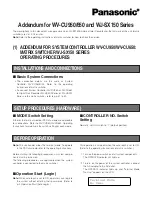
Input signal
Timer 1/Timer 2
Output signal
Timer 1/Timer 2
DEACTIVATED
Output signal
Timer 1/Timer 2
T-ON DELAY
Output signal
Timer 1/Timer 2
T-OFF DELAY
Output signal
Timer 1/Timer 2
T-ON/T-OFF DELAY
Output signal
Timer 1/Timer 2
IMPULSE (one shot)
t
t
t
t
t
t
t
t
t
t
t
t
t
t
t
t
t
Figure 28: Mode of operation of time modes
NOTE
Inverting the
Timer 1/2
output signal does not affect how the delay modes work. Note
that due to the inversion of the
Timer 1/2
output signal, a set switch-on delay, for
example, can act like a switch-off delay.
Inverter 1/2
inverts the logic state of the
Timer 1/2
output signal.
Q
L1
/ Q
L2
output the result of the
Smart Task
. The state of Q
L1
is output via pin 4 (unless
pin 4 is used as an IO-Link interface).
Pin 2 can output the Q
L2
state or alternatively be configured for other purposes. Pin 4 is
therefore also called MF (Multi Function). The following configuration is possible:
•
External input
: If pin 2 / MF is configured as
External input
, this is available for
selection in
Input selector 1/2
•
Blocked beams hold
: If the input signal is 1 (“HIGH”), the
Blocked beams hold
function
is set. In this case, once interrupted, beams remain set or are held. Thus, only
one status change of a beam from 0 to 1 is possible. This function is suitable, for
example, to determine the highest point of an object.
If the input signal is 0 (“LOW”), the
Block beams hold
function is deactivated. The
Blocked beam hold
function is deactivated. The process data is no longer held.
•
Teach-in
: A teach-in can be performed via an input signal,
.
•
Switching signal
Q
L2
: Output of Q
L2
state via pin 2 / MF
•
Masked system status
: A selection of diagnostic information can be output via pin
2 / MF as an alarm signal output,
see "Diagnostic settings", page 39
.
7
OPERATION
36
O P E R A T I N G I N S T R U C T I O N S | SLG-2
8026014/2021-06-10 | SICK
Subject to change without notice
















































